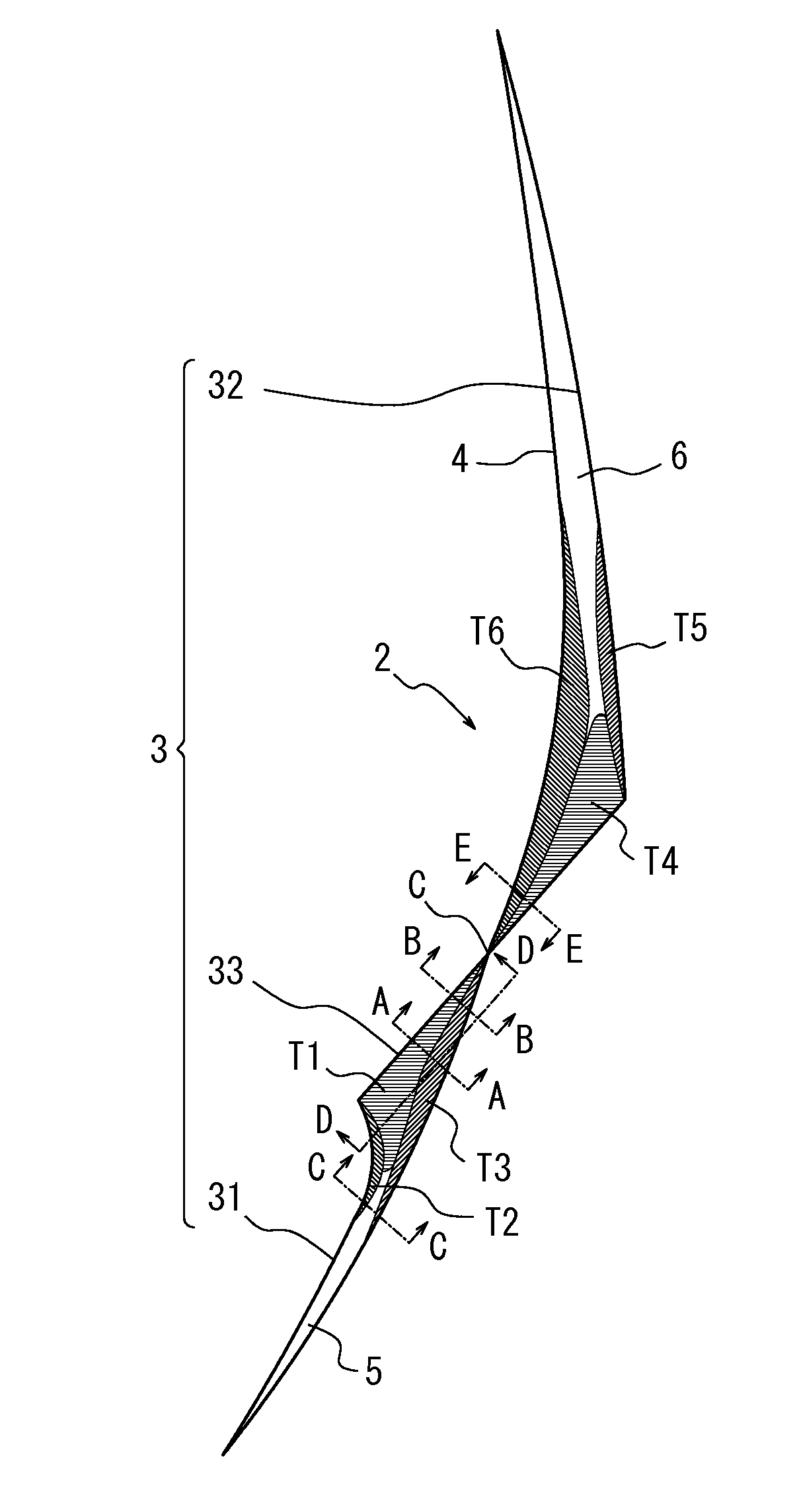Pneumatic tire
a pneumatic tire and tire body technology, applied in the field of pneumatic tires, can solve the problems of reducing the rigidity of the tread portion to generate a difference in rigidity, and it is difficult to ensure both drivability and partial wear resistance at the same time, so as to suppress the reduction in rigidity, shorten the length, and improve the pneumatic tire in partial wear resistance
- Summary
- Abstract
- Description
- Claims
- Application Information
AI Technical Summary
Benefits of technology
Problems solved by technology
Method used
Image
Examples
example 1
[0061]Pneumatic tires (for rear wheels) which were configured as illustrated in FIGS. 1 to 4 and had the specifications shown in Table 1 were manufactured as samples by a conventional method. The tires were each in size 180 / 55ZR17.
[0062]Then, the tires were subjected to performance evaluation according to the following methods. The evaluation results are shown in Table 1.
examples 2 to 5
[0064]Pneumatic tires each having a configuration similar to that of Example 1, except in that the specifications were changed as shown in Table 1, were manufactured as samples, which were subjected to performance evaluation similarly to Example 1. The evaluation results are shown in Table 1.
[0065]Drivability
[0066]The pneumatic tires thus manufactured were each mounted to a rim in size of MT5.50×17, which is assembled as a rear tire of a real vehicle of 600 cc displacement at a filling air pressure of 190 kPa. The vehicle was then repeatedly driven at 40 km / h to 250 km / h at a camber angle of 0° to 50° on a round track of 10 km, so as to evaluate drivability. Specifically, drivability was evaluated based on the feeling of a professional rider, which was indexed with a score of 100 representing the drivability of Comparative Example 1. A larger index value indicates that the tire is more excellent in drivability.
[0067]Partial Wear Resistance
[0068]The pneumatic tires thus manufactured ...
PUM
 Login to View More
Login to View More Abstract
Description
Claims
Application Information
 Login to View More
Login to View More - R&D
- Intellectual Property
- Life Sciences
- Materials
- Tech Scout
- Unparalleled Data Quality
- Higher Quality Content
- 60% Fewer Hallucinations
Browse by: Latest US Patents, China's latest patents, Technical Efficacy Thesaurus, Application Domain, Technology Topic, Popular Technical Reports.
© 2025 PatSnap. All rights reserved.Legal|Privacy policy|Modern Slavery Act Transparency Statement|Sitemap|About US| Contact US: help@patsnap.com



